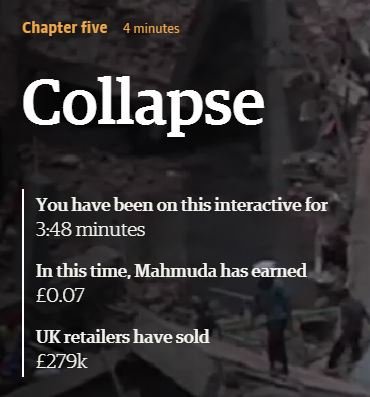What do they mean by "slow fashion" and "fast fashion"?
There has never been so much talk of bio, of zero kilometres, of slow food, as in the last year. Thanks to the impending Food Theme Expo, the success of Carlo Petrini's movement, the spread of the GAS, the advent of Eataly in Milan, which occupies the space that once occupied the Emerald Theatre, the NaturaSìs that appear as mushrooms. The data are clear: according to a report published by Sinab (National Information System on Organic Farming) in September 2014, domestic purchases of packaged organic food from retailers increased by 17.3% in the first 5 months of the year compared to the first five months of 2013. There is a lot of talk about quality, short supply chain, benefits for health, for the environment, for producers and when Expo arrives, the conversation will increase more and more.
These trends can have decidedly positive consequences on individual behaviours and consumption, but the desire to know all that is known about the production method, the quality of raw materials and the people who contributed to the creation of a product is not only about food. Another product sector to pay attention to in relation to its supply chain is that of textiles, furniture and in particular fashion.
In recent months, the Swedish company H&M has opened new stores in Milan, Trento and Treviso. The low cost brand, together with other labels famous in Italy and overseas such as Zara, Mango, Topshop and Primark, promotes the so-called "fast fashion", which goes beyond the binomial "Spring-Summer" / "Autumn-Winter" and offers dozens if not hundreds of collections per year.
Try to enter a H&M shop today and come back in a month's time: you will hardly find the same clothes hanging from the hangers as you had used the previous time and this mechanism, combined with the relatively low costs of products, often triggers hasty purchases dictated by the instinct and desire to take away from the sight of others* contenders a sweater that may not interest us so much. Fast fashion doesn't just involve shops: a glance at fashion newspapers, fashion blogs, thematic websites and market research is enough to discover that every month (if it's okay!) has a new trend and everything is obviously needed to get us back to the store as often as possible, to keep up with this speed.

Other "contraindications" of fast fashion are poor quality clothes sold during sales or in outlets (often produced by completely different suppliers and with poorer materials than those foreseen for "normal" collections) and the deliberately low quality of many fabrics and stitching, destined to fade/paint/squeeze/darken/emanate bad odours after a few washes. All this for a single and simple purpose, always the same: get us back to the store as often as possible.
Last but not least, the environmental and human cost of such productions. The largest clothing markets in the world are currently Brazil, China, Italy, Japan, Italy and the United States, while the markets expected to grow most in 2018 are Tanzania, Bangladesh, Ethiopia, Cambodia and Yemen, according to a study published in November.
Bangladesh, whose exports of clothing reached 27.02 billion U. S. dollars in June 2013, received much attention from the media, associations and global brands after the collapse of Rana Plaza in Dhaka, where 1,129 people were killed. The Guardian has dedicated an interactive article to the disaster and human cost of clothing production in Dhaka, divided into chapters. Between one chapter and another, you can monitor how many minutes it takes to read the piece and how much the story's protagonist, a young worker who survived the collapse, gained in that period of time.

Some of the world's largest producers gathered together in 2013 (in two separate and rival groups, as reported by the New York Times) to secure some factories in Bangladesh and completed controls in October 2014. The refurbishment of electrical, water, safety and security systems and the stability of buildings are fundamental elements to be monitored, but it is important to remember that even according to the law, the minimum wage of a worker (very often a worker: in Bangladesh 90% of workers in this sector are women) in the Bengali textile sector is 68 dollars per month, the equivalent of 54.82 euros.
In Vietnam, the figure varies between USDÂ 90 and USDÂ 128, depending on the region, and is USDÂ 100 in Cambodia. As reported by Clean Clothes, Cambodian textile workers often took to the streets, even at the cost of living, between 2013 and 2014 and returned to protest last September to demand a salary increase from $100 to $177 per month, because their salary is about a quarter of what they should earn to have an acceptable quality of life.
The relocation of production is not a novelty and is applied by industries in many sectors: automotive, household appliances, cameras, computers, smartphones. The element that distinguishes the fashion sector and in particular fast fashion from others is the volatility of the trends that affect it and the increasing reduction in the life cycle of products. To understand us, unless a person has a particular mania or is a collector, he will not buy as many computers, as many eBook readers, as many blenders, as many bookshops as the market will suggest to him depending on the season, but usually he will buy a number of products proportional to his actual needs. Fast fashion, on the other hand, has the declared objective not only to make many items buy at a time, but also to obtain a frequent return of the customer to their point of sale, several times a year.
There are alternatives, which can be aggregated under the hat of the so-called slow fashion movement: buy from craftsmen to promote local products and fair trade, prefer second-hand and vintage clothes and donate those who no longer use them, buy clothes produced in respect of the environment and workers, try to adopt a style that transcends current trends and promote resistant and quality fabrics, so as to decrease the pace of purchases and buy fewer clothes, less often, in order to save money and waste. And when you have time, tools and skills, give yourself to the do-it-yourself: make new dresses from old clothes, customize anonymous garments to make them unique. How does blogger Annika Victoria of The Pineneedle Collective blogger Annika Victoria, who teaches her magic tricks with beautiful, clear and colorful tutorials.
The definition of "slow fashion" has come to us since not far away in 2008, when the sustainable design consultant Kate Fletcher used these words to define a type of production and consumption based on a concept in contrast to "fast fashion" and growing consumerism, particularly with regard to objectives and values.
Quality rather than quantity, first of all. Reduced production and more value added to local production would have a positive impact on the environment, including reduced transport of goods and the use of pesticides, detergents and cleaning products. Local production is not enough, even the source of raw materials is important: by favouring local ones, their weight on CO2 emissions and other polluting factors decreases even more.
Respect for people: participating in exchanges, markets, cooperatives, associations for the rights of textile workers and signing codes of conduct can help to ensure fair and humane treatment for people who produce the garments and the fabric with which they are made. According to the Movement, it is important that local communities in every part of the world are helped to set up small-scale businesses to produce consumer goods that can also benefit the local community and not only provide cheap export material for richer continents.
Fast fashion probably has a very long life ahead of it and many manufacturers have no intention of slowing down the pace of production. That said, consumers and consumers may choose not to close their eyes. And to adopt a more "slower" style, to safeguard both the planet and human rights (and in the long run, even the portfolio).